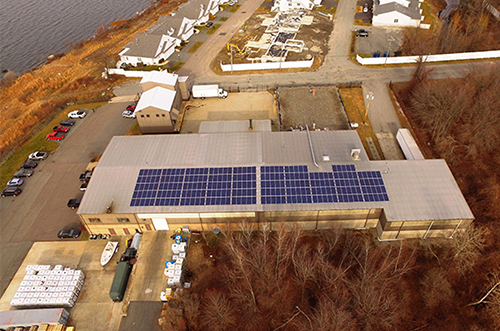How Bolger & O’Hearn is reducing its carbon footprint
April 22nd is coming up, and you know what that means? It’s Earth Day. But don’t worry if you don’t have any celebrations planned. We don’t either.
And we actually think that’s a great thing.
Because, just as smart phones have become the accepted mode of communication today, embracing an environmentally conscious mindset has become the new normal. And this is evident at Bolger & O’Hearn, where we treat every day as Earth Day.
If you’ve been keeping up with us for the past two weeks, you probably know about Altopel F3, our 100 percent fluorine-free durable water repellent (DWR). And you probably know that because Altopel F3 is free of perfluorocarbons (you might know them better as “PFCs”), it doesn’t generate any toxic byproducts or lead to any harmful bioaccumulation. In other words, Altopel F3 can help the outdoor industry reduce its reliance on PFCs and enhance its commitment to the environment.
It’s a sunny day for DWRs.
Something we’ve yet to touch on, however, is the manufacturing process behind our products. At Bolger & O’Hearn, we’re so dedicated to reducing our—and frankly our entire industry’s—carbon footprint that we’ve installed a solar voltaic array on our labs in Fall River, Massachusetts. Converting sunlight into renewable energy, the solar panels have a daily output of roughly 87kWh. Over the course of one year, we’ll displace more than 100,000 pounds of carbon.
This means clean energy is helping us create cleaner DWRs.
As a bluesign® system partner, we’re always thinking green.
With our fixation on responsibly sourced energy and eco-friendly products, you’d be happy to know that we’re a proud bluesign® system partner. If you’re not familiar with this, the bluesign® system is the independent global program that establishes strict guidelines to ensure safe, eco-friendly textile manufacturing processes.
And they say we’re doing everything right, which is saying quite a lot.
Quite simply, Altopel F3 is proven tough.
Now, we hate to admit it, but we know terms like “eco-friendly” and “sustainable” elicit a certain response. Though these are overwhelmingly positive features, environmentally safe DWRs can still be perceived as weak and ineffective. We’re here to say otherwise.
To prove the durability and effectiveness of our newest water repellent, we actually had the esteemed Hohenstein Institute in Germany perform rigorous wash tests on several garments treated with Altopel F3. Basically, they took some garments, applied Altopel F3 to them, and repeatedly laundered them in a standard washing machine. Keep in mind that multiple washing cycles are known to remove fabric finishes, thus destroying their water repellency.
Before washing, Altopel F3 received an ISO Spray Rating of 5. After 20 washes, it received an ISO Spray Rating of 4-5. If these numbers mean nothing to you, no worries. Just know that industry insiders recognize these as the highest ratings available.
Debunking those unfriendly myths about eco-friendly chemicals.
Before we close, let’s visit some myths surrounding eco-friendly DWRs.
MYTH: While the end product might be considered eco-friendly, the manufacturing
processes for DWRs are damaging to the environment.
FACT: As a specialty chemical developer devoted to a zero-carbon future, Bolger &
O’Hearn happily debunks this one. We created fluorine-free water repellents such as Altopel F3 by using renewable energy sources.
MYTH: Eco-friendly manufacturing practices lead to weaker, less effective DWRs.
FACT: Bolger & O’Hearn’s Altopel F3 says otherwise. According to tests conducted by the
Hohenstein Institute, Altopel F3 received some of the highest ratings for durability and efficacy. It’s highly effective at repelling water and just as—if not more—durable than its PFC-based counterparts.
MYTH: Eco-friendly DWRs such as Altopel F3 are more expensive than their
less-sustainable counterparts.
FACT: You’ll be relieved to know that Altopel F3 is actually cost neutral to counterpart
repellents, with further potential cost savings from material and process efficiencies.
If you’d like to dive even deeper into other incredible facts about Altopel F3, please contact Shawn Honeycutt at Bolger & O’Hearn. For sales inquiries regarding Altopel F3–based fabrics, please contact Concept III.







